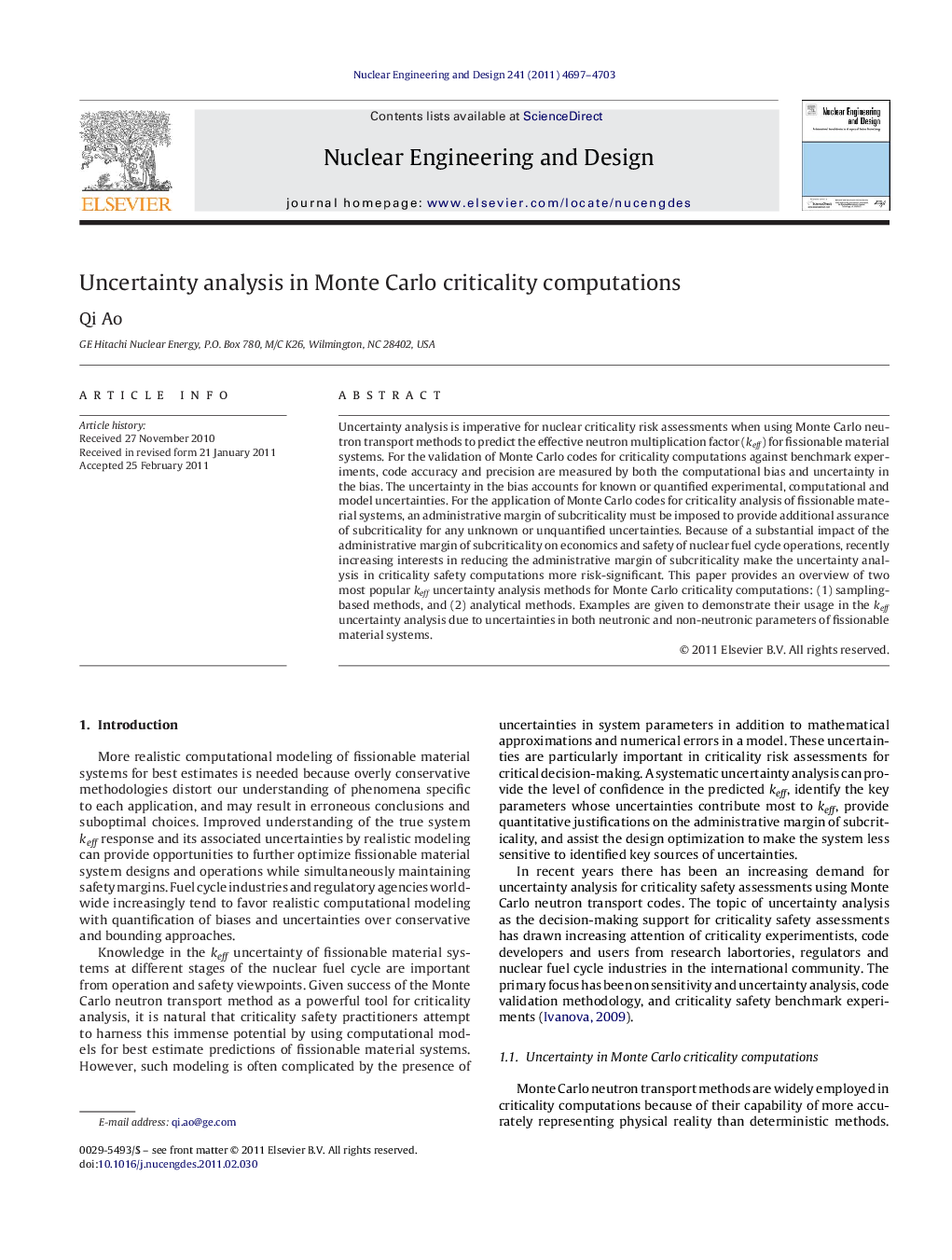| کد مقاله | کد نشریه | سال انتشار | مقاله انگلیسی | نسخه تمام متن |
|---|---|---|---|---|
| 297577 | 511762 | 2011 | 7 صفحه PDF | دانلود رایگان |

Uncertainty analysis is imperative for nuclear criticality risk assessments when using Monte Carlo neutron transport methods to predict the effective neutron multiplication factor (keff) for fissionable material systems. For the validation of Monte Carlo codes for criticality computations against benchmark experiments, code accuracy and precision are measured by both the computational bias and uncertainty in the bias. The uncertainty in the bias accounts for known or quantified experimental, computational and model uncertainties. For the application of Monte Carlo codes for criticality analysis of fissionable material systems, an administrative margin of subcriticality must be imposed to provide additional assurance of subcriticality for any unknown or unquantified uncertainties. Because of a substantial impact of the administrative margin of subcriticality on economics and safety of nuclear fuel cycle operations, recently increasing interests in reducing the administrative margin of subcriticality make the uncertainty analysis in criticality safety computations more risk-significant. This paper provides an overview of two most popular keff uncertainty analysis methods for Monte Carlo criticality computations: (1) sampling-based methods, and (2) analytical methods. Examples are given to demonstrate their usage in the keff uncertainty analysis due to uncertainties in both neutronic and non-neutronic parameters of fissionable material systems.
► Two types of uncertainty methods for keff Monte Carlo computations are examined.
► Sampling method has the least restrictions on perturbation but computing resources.
► Analytical method is limited to small perturbation on material properties.
► Practicality relies on efficiency, multiparameter applicability and data availability.
Journal: Nuclear Engineering and Design - Volume 241, Issue 12, December 2011, Pages 4697–4703